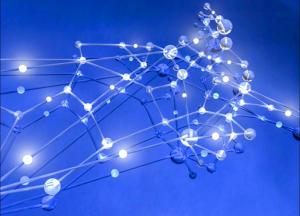Integrating new systems
These changes highlight the fact that while the integrated control system provides a means for all systems to act in unison, integrating individual control systems is inherently complex. As new systems are added, intricate interplays among individual systems during integration and commissioning often raise challenges, which are sometimes related to the first-of-a-kind nature of the ITER machine.
As more systems are integrated, the network of control systems becomes more complicated, making it more difficult to shelter existing systems from change. The requirement to support real-time systems adds to the challenge, because it relies on very tight time synchronization among all components.
"If your architecture is based on having each client request the time from a central service, the more clients you add, the more the central system is interrupted," explains Bertrand Bauvir, leader of ITER's Central Control Integration Section. "We selected the technology for time synchronization, and we defined the architecture so as to guarantee that even if we bring in a new system there would be no impact on anything else on the network. We use PTP [precision time protocol], where the time is broadcast over the whole network instead of being requested by each client."
Another consideration when adding a new system has to do with naming and addressing¹. New signals will be transmitted on the network—in some cases, hundreds of thousands of them—and those signals and the components that make up the new system have to be uniquely identified within the overall system. "We have a database with the name of every component within every plant system and of every measurement and signal associated with the component," says Bauvir. "A combination of all this information gives you a unique way to address any individual signal in the machine."
But it is not just a question of naming and addressing equipment. When physicists wonder what the average temperature of the cooling water in the part of the machine is, they do not think of cables. They express their problem in the terms of their own domain. That is then translated to sensors, cables, and signals. "To operate the machine, you have to associate abstract concepts to collections of names and then to collections of addresses," says Bauvir.
When new systems are added, another consideration is adherence to local standards. Each new system comes with one or more new cubicles, manufactured in different parts of the world. In the end, though, everything must satisfy the French standards related to electrical installations. "It's actually a non-negligible milestone to energize a cubicle," says Bauvir. "We have cubicles manufactured in different parts of the world. Sometimes they don't satisfy the critical norms in France, where they will operate."
Each cubicle is fed with electrical power and a backup in case primary power is lost. The cubicle is also fed with connections from the data network to industrial computers running a real-time operating system inside the cubicle. The connection to the data network is also redundant in case the primary cables fail. Other dedicated cables run outside the cubicle to connect to sensors, actuators and other controllers. In addition to hosting a system mechanically and electrically, the cubicle serves another crucial role—protecting the system from dust, water, electromagnetic radiation and seismic events.
"We have many cubicles with as few interdependencies as possible," says Bauvir. "We distribute the control system so we can add or modify one system without affecting others. If systems were implemented with software that ran on the same computer as software from other systems, you would have to stop the other systems to make the change and restart the computer."
For this reason, every single system has its own set of central computers and its own dedicated set of services. A change to one system has little or no impact to any of the others.
¹ In computer networking there is a fundamental distinction between names and addresses: A name is a symbol that uniquely identifies a resource on a network; an address is a data structure that uniquely identifies the location of a resource on a network.


